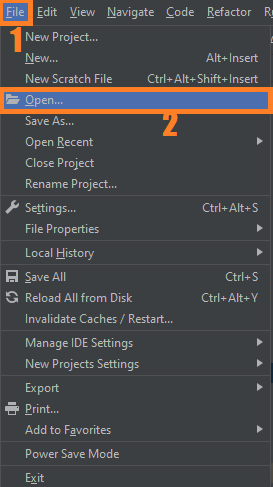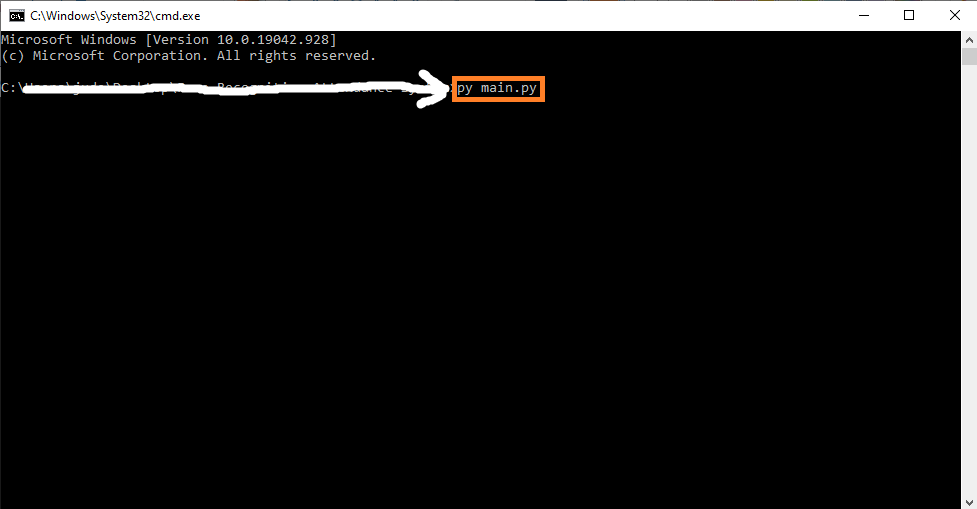Document Scanner OpenCV Python With Source Code
The Document Scanner OpenCV Python was developed using Python OpenCV, the scanner takes a poorly scanned image, finds the corners of the document, applies the perspective transformation to get a top-down view of the document, sharpens the image, and applies an adaptive color threshold to clean up the image.
What is OpenCV?
OpenCV is short for Open Source Computer Vision. Intuitively by the name, it is an open-source Computer Vision and Machine Learning library.
This library is capable of processing real-time image and video while also boasting analytical capabilities. It supports the Deep Learning frameworks.
In this Python OpenCV Project also includes a downloadable Python Project With Source Code for free, just find the downloadable source code below and click to start downloading.
By the way if you are new to python programming and you don’t know what would be the the Python IDE to use, I have here a list of Best Python IDE for Windows, Linux, Mac OS that will suit for you. I also have here How to Download and Install Latest Version of Python on Windows.
To start executing Document Scanner OpenCV Python With Source Code, make sure that you have installed Python 3.9 and PyCharm in your computer.
Document Scanner OpenCV Python With Source Code : Steps on how to run the project
Time needed: 5 minutes
These are the steps on how to run Document Scanner OpenCV Python With Source Code
- Step 1: Download the given source code below.
First, download the given source code below and unzip the source code.

- Step 2: Import the project to your PyCharm IDE.
Next, import the source code you’ve download to your PyCharm IDE.

- Step 3: Run the project.
last, run the project with the command “py main.py”

Installed Libraries
import numpy as np import cv2 import imutils
Complete Source Code
import numpy as np
import cv2
import imutils
args_image ="docu.jpg"
image = cv2.imread(args_image)
image=cv2.resize(image,(500,500))
orig = image.copy()
cv2.imshow("Original Image", image)
cv2.waitKey(0)
cv2.destroyAllWindows()
grayImage = cv2.cvtColor(image, cv2.COLOR_BGR2GRAY)
grayImageBlur = cv2.blur(grayImage,(2,2))
edgedImage = cv2.Canny(grayImageBlur, 100, 300, 3)
cv2.imshow("gray", grayImage)
cv2.waitKey(0)
cv2.destroyAllWindows()
cv2.imshow("grayBlur", grayImageBlur)
cv2.waitKey(0)
cv2.destroyAllWindows()
cv2.imshow("Edge Detected Image", edgedImage)
cv2.waitKey(0)
cv2.destroyAllWindows()
allContours = cv2.findContours(edgedImage.copy(), cv2.RETR_LIST, cv2.CHAIN_APPROX_SIMPLE)
allContours = imutils.grab_contours(allContours)
allContours = sorted(allContours, key=cv2.contourArea, reverse=True)[:1]
perimeter = cv2.arcLength(allContours[0], True)
ROIdimensions = cv2.approxPolyDP(allContours[0], 0.02*perimeter, True)
cv2.drawContours(image, [ROIdimensions], -1, (0,255,0), 2)
cv2.imshow("Contour Outline", image)
cv2.waitKey(0)
cv2.destroyAllWindows()
ROIdimensions = ROIdimensions.reshape(4,2)
rect = np.zeros((4,2), dtype="float32")
s = np.sum(ROIdimensions, axis=1)
rect[0] = ROIdimensions[np.argmin(s)]
rect[2] = ROIdimensions[np.argmax(s)]
diff = np.diff(ROIdimensions, axis=1)
rect[1] = ROIdimensions[np.argmin(diff)]
rect[3] = ROIdimensions[np.argmax(diff)]
(tl, tr, br, bl) = rect
widthA = np.sqrt((tl[0] -tr[0])**2 + (tl[1] - tr[1])**2 )
widthB = np.sqrt((bl[0] - br[0])**2 + (bl[1] - br[1])**2 )
maxWidth = max(int(widthA), int(widthB))
heightA = np.sqrt((tl[0] - bl[0])**2 + (tl[1] - bl[1])**2 )
heightB = np.sqrt((tr[0] - br[0])**2 + (tr[1] - br[1])**2 )
maxHeight = max(int(heightA), int(heightB))
dst = np.array([
[0,0],
[maxWidth-1, 0],
[maxWidth-1, maxHeight-1],
[0, maxHeight-1]], dtype="float32")
transformMatrix = cv2.getPerspectiveTransform(rect, dst)
scan = cv2.warpPerspective(orig, transformMatrix, (maxWidth, maxHeight))
cv2.imshow("Scaned",scan)
cv2.waitKey(0)
cv2.destroyAllWindows()
scanGray = cv2.cvtColor(scan, cv2.COLOR_BGR2GRAY)
cv2.imshow("scanGray", scanGray)
cv2.waitKey(0)
cv2.destroyAllWindows()
from skimage.filters import threshold_local
T = threshold_local(scanGray, 9, offset=8, method="gaussian")
scanBW = (scanGray > T).astype("uint8") * 255
cv2.imshow("scanned", scanBW)
cv2.waitKey(0)
cv2.destroyAllWindows()Download the Source Code below
Anyway, if you want to level up your programming knowledge, especially Python OpenCV, try this new article I’ve made for you Best OpenCV Projects With Source Code For Beginners .
Summary
This Project With Source Code takes a poorly scanned image, finds the corners of the document, applies the perspective transformation to get a top-down view of the document, sharpens the image, and applies an adaptive color threshold to clean up the image.
And this Python project was developed and designed using Python OpenCV, and this Python OpenCV Project also includes a downloadable Python Project With Source Code for free.
Related Articles
- Code For Game in Python: Python Game Projects With Source Code
- Best Python Projects With Source Code FREE DOWNLOAD
- How to Make a Point of Sale In Python With Source Code
- Python Code For Food Ordering System | FREE DOWNLOAD |
- Inventory Management System Project in Python With Source Code
Inquiries
If you have any questions or suggestions about Document Scanner OpenCV Python With Source Code, please feel free to leave a comment below.




